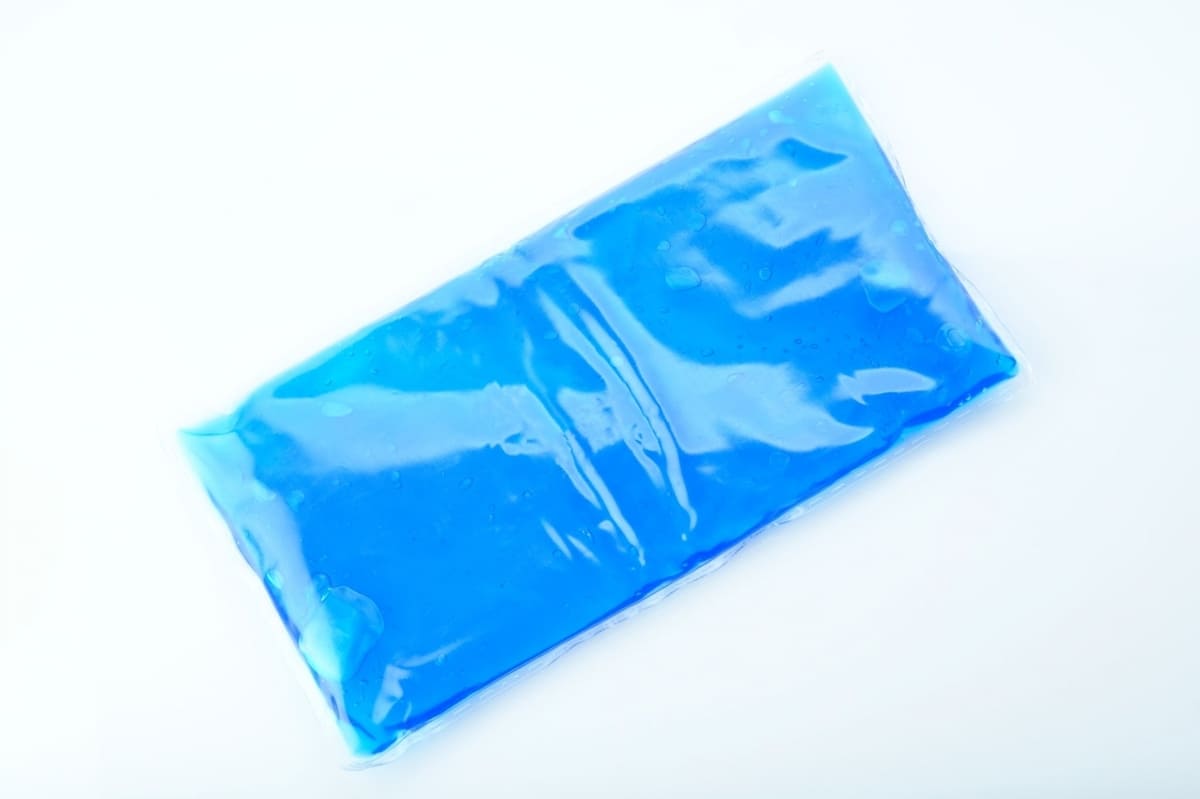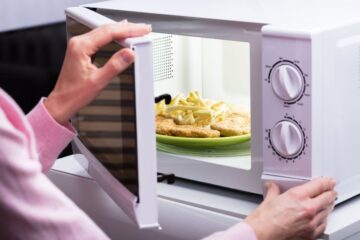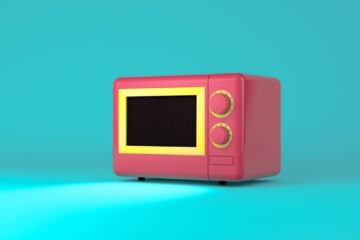Heat packs are a handy tool that can help alleviate muscle aches, pains, and stiffness, making them a popular choice among people with arthritis, sore muscles, and menstrual cramps. However, many people who use heat packs might not have access to a microwave or prefer not to use one.
Luckily, there are several alternative methods for heating a heat pack that do not involve a microwave. In this guide, we will explore various microwave-free methods for heating a heat pack, discuss their advantages and disadvantages, and provide some useful tips to help you choose the right heat pack for your needs.
Understanding Heat Packs
What are heat packs?
Heat packs are small bags filled with materials that can be heated and then applied to sore muscles or aching body parts to help relieve pain and discomfort. There are many different types of heat packs available, including electric heat pads, chemical heat packs, and natural heat packs like rice bags or cherry pits.
How do they work?
Heat packs work by dilating blood vessels, which increases blood flow to the affected area. This increased blood flow helps to relax the muscles, reduce inflammation, and alleviate pain.
Different types of heat packs
There are many different types of heat packs available on the market, each with its unique features and benefits. Some of the most common types of heat packs include:
- Electric heating pads: These heat pads are powered by electricity and can be plugged into an outlet or a USB port. They are often adjustable, allowing you to set the temperature to your desired level.
- Chemical heat packs: These heat packs use a chemical reaction to produce heat. They are often single-use and can be activated by shaking or squeezing them.
- Natural heat packs: These heat packs are filled with natural materials like rice, cherry pits, or flax seeds. They can be heated in the microwave or oven and can be reused multiple times.
Benefits of using heat packs
There are many benefits to using heat packs, including:
- Relieving muscle pain and stiffness
- Reducing inflammation
- Promoting relaxation
- Improving blood flow
- Alleviating menstrual cramps
Microwave-Free Heating Methods
If you do not have access to a microwave or prefer not to use one, there are several alternative methods for heating your heat pack.
Boiling water
Boiling water is a simple and effective way to heat your heat pack. Here’s how to do it:
- Fill a pot with water and bring it to a boil.
- Once the water is boiling, turn off the heat and remove the pot from the stove.
- Place your heat pack in the water and let it soak for a few minutes.
- Use tongs or a spoon to remove the heat pack from the water.
- Test the temperature of the heat pack before using it to ensure it is not too hot.
Precautions and safety tips
- Do not place the heat pack directly on the skin. Always wrap it in a towel or cloth before use.
- Be careful when handling hot water and use a pot holder or oven mitts to protect your hands.
- Do not overheat the heat pack as this can cause burns.
Advantages and disadvantages
- Boiling water is an effective way to heat your heat pack, and it is readily available in most households.
- However, it can take a bit longer to heat your heat pack this way, and you need to be careful not to burn yourself.
Oven Heating Method
If you have an oven, you can also use it to heat your heat pack. Here’s how:
- Preheat your oven to 300°F (150°C).
- Wrap your heat pack in a towel or place it in an oven-safe dish.
- Put the towel-wrapped heat pack or dish with the heat pack inside the preheated oven.
- Let it heat for about 10-15 minutes.
- Use oven mitts or a thick towel to remove the heat pack from the oven. Be careful not to burn yourself.
Precautions and Safety Tips
- Never leave your heat pack unattended in the oven.
- Always use an oven mitt or a thick towel when handling a heated heat pack.
- Do not overheat the heat pack, as this can cause burns or damage the filling material.
- Always make sure that the heat pack is completely dry before putting it in the oven.
- Do not heat a heat pack that contains metal or wires as it can cause a fire.
Advantages and Disadvantages
The advantage of heating a heat pack in the oven is that it’s easy and quick. It’s also an excellent option if you don’t have a microwave. However, it can be challenging to get the heat pack temperature just right, and there is always the risk of overheating it.
Heating Pads Method
Another way to heat your heat pack without a microwave is to use a heating pad. Here’s how:
- Place your heat pack in a microwave-safe dish or wrap it in a towel.
- Put the heating pad in the microwave and heat it according to the manufacturer’s instructions.
- Place the heated heating pad on top of your heat pack.
- Let it sit for a few minutes until the heat pack reaches your desired temperature.
Precautions and Safety Tips
- Follow the manufacturer’s instructions when heating the heating pad.
- Always use an oven mitt or a thick towel when handling a heated heat pack.
- Do not overheat the heat pack, as this can cause burns or damage the filling material.
- Do not use the heating pad if it’s damaged or shows signs of wear and tear.
Advantages and Disadvantages
Using a heating pad is an excellent option if you don’t have a microwave or oven. It’s also a convenient way to heat your heat pack, as you can use the same heating pad multiple times. However, heating pads can be expensive and may not be suitable for everyone.
Hot Water Bottles Method
Hot water bottles are another way to heat your heat pack without a microwave. Here’s how:
- Fill a hot water bottle with hot water.
- Wrap your heat pack in a towel or place it in a microwave-safe dish.
- Place the hot water bottle on top of your heat pack.
- Let it sit for a few minutes until the heat pack reaches your desired temperature.
Precautions and Safety Tips
- Always use hot, not boiling water in your hot water bottle.
- Make sure the hot water bottle is not leaking or damaged.
- Use an oven mitt or a thick towel when handling the hot water bottle and heat pack.
- Do not overheat the heat pack, as this can cause burns or damage the filling material.
Advantages and Disadvantages
Using hot water bottles to heat your heat pack is an excellent option if you don’t have a microwave or oven. It’s also a low-cost option and widely available. However, it can be challenging to get the water temperature just right, and there is always the risk of leaks or burns.
Chemical Reaction Packs Method
Chemical reaction packs are another way to heat your heat pack without a microwave. These packs are typically filled with sodium acetate and water, which create a chemical reaction when activated. The reaction produces heat, which can last for up to an hour.
How to activate a chemical reaction pack?
To activate a chemical reaction pack, you’ll need to locate the metal disc inside the pack. The disc is typically surrounded by a small metal button. When you flex the metal disc, it triggers the chemical reaction and the pack begins to heat up.
Here are the steps to activate a chemical reaction pack:
- Find the metal disc inside the pack.
- Hold the pack in one hand and use your other hand to flex the metal disc back and forth. You should hear a clicking sound.
- Keep flexing the disc until the pack becomes warm. It may take a few minutes for the pack to heat up fully.
Precautions and safety tips
As with any heating method, it’s important to take precautions when using chemical reaction packs. Here are some safety tips to keep in mind:
- Follow the manufacturer’s instructions carefully.
- Do not puncture or damage the pack.
- Do not microwave the pack.
- Do not place the pack in boiling water.
- Allow the pack to cool completely before activating it again.
Advantages and disadvantages
One advantage of chemical reaction packs is that they’re portable and can be used anywhere. They’re also relatively easy to use and can be activated quickly. However, they’re not reusable, and you’ll need to purchase new packs once they’ve been activated.
Alternative Ways to Heat Your Heat Pack
If you don’t have access to a microwave, oven, heating pad, hot water bottle, or chemical reaction packs, there are still a few other ways to heat up your heat pack. Here are some alternative methods:
Using body heat
If you’re in a pinch, you can use your body heat to warm up your heat pack. Simply hold the pack against your skin or tuck it under a blanket to trap in the heat.
Using the sun
On a warm, sunny day, you can place your heat pack in direct sunlight to warm it up. This method may take a bit longer than other methods, but it’s a good option if you don’t have access to any other heating methods.
Using warm towels
You can also use warm towels to heat up your heat pack. Simply soak a towel in hot water and wring out the excess water. Then, wrap the towel around your heat pack and leave it for a few minutes to warm up.
Tips for Choosing the Right Heat Pack
When choosing a heat pack, there are a few factors to consider:
- Type: There are several types of heat packs available, including rice-filled packs, gel packs, and chemical reaction packs.
- Size: Choose a size that’s appropriate for the area of your body that you’ll be using the heat pack on.
- Material: Look for heat packs made from high-quality materials that can withstand frequent use.
- Reusability: Decide if you want a heat pack that’s reusable or disposable.
Best heat packs on the market
When it comes to choosing the right heat pack for your needs, there are plenty of options on the market. Here are some of the best heat packs available today:
- Nature Creation Herbal Heating Pad: This heat pack is filled with natural herbs and grains and can be heated in the microwave or oven. It comes in a variety of shapes and sizes to fit any part of the body.
- My Heating Pad Microwavable Heating Pad: This heat pack is filled with rice and can be heated in the microwave. It comes in a variety of colors and sizes and is designed to provide long-lasting heat therapy.
- Sunny Bay Extra Large Body Heating Pad: This heat pack is designed to cover a large area of the body and can be heated in the microwave or oven. It’s made with natural materials and comes with a removable, washable cover.
- Bed Buddy Heat Pad and Cooling Neck Wrap: This heat pack can be heated in the microwave and also doubles as a cooling neck wrap. It’s filled with natural materials and is designed to provide targeted heat therapy.
- Thermalon Microwave Activated Moist Heat Pad: This heat pack is filled with a unique gel that produces moist heat when microwaved. It’s designed to provide targeted relief for aches and pains.
When choosing a heat pack, consider factors such as the size and shape, the type of filling material, and the method of heating. You should also consider any specific needs or conditions you may have, such as allergies or sensitivities to certain materials.
Precautions and Safety Tips
General precautions and safety tips for heating a heat pack:
- Always read and follow the manufacturer’s instructions for your heat pack.
- Avoid overheating your heat pack, as this can cause burns or damage to the pack.
- Check your heat pack for signs of wear or damage before heating it.
- Never heat a heat pack that contains metal, as this can cause a fire or damage to your microwave.
- Always use a cover or towel between your skin and the heat pack to prevent burns or discomfort.
- If you have sensitive skin, check with your doctor before using a heat pack.
- Never leave a heat pack unattended while it is heating.
Specific tips for each heating method:
- Boiling water: Always use a heat-resistant container when heating water on the stove, and be sure to remove the pot carefully to avoid spills or burns.
- Oven heating: Use oven mitts or a towel to handle your heat pack when removing it from the oven, and be sure to let it cool before using it.
- Heating pads: Follow the instructions for your heating pad carefully, and be sure to unplug it when not in use.
- Hot water bottles: Be sure to fill your hot water bottle with hot, but not boiling water, and check for leaks or wear before use.
- Chemical reaction packs: Always follow the instructions for activating your chemical reaction pack, and be sure to dispose of it properly after use.
Conclusion
In conclusion, heat packs are an effective and convenient way to alleviate pain and discomfort in various parts of the body. Whether you prefer electric heat packs, microwavable ones, or chemical reaction packs, there are many options available on the market to suit your needs. It’s important to use heat therapy correctly and safely, and to follow the instructions provided with your heat pack.
Always check with your doctor before using heat therapy, especially if you have a medical condition or are pregnant. With the right heat pack and proper usage, you can find relief from pain and enjoy the soothing benefits of heat therapy.



